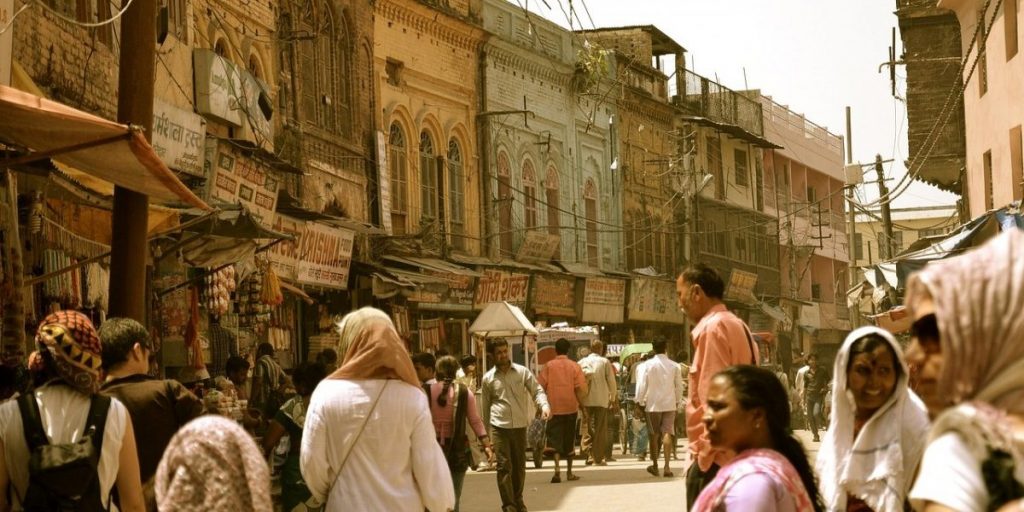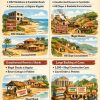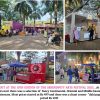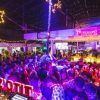Goa is abuzz with excitement as vintage bike and car owners, users, collectors and fans are decking […]

A REALITY CHECK ON ‘ HINDU INDIA!
In the News, Jan 13 - Jan 19 2024 January 12, 2024By Anjana Rajan
Ziya Us Salam’s ‘Being Muslim in Hindu India’ paints a clear, searing picture of a community increasingly under siege from Hindutva forces that have overrun large parts of the country.
Despair threatens to overwhelm me as I read Ziya Us Salam’s Being Muslim in Hindu India: A Critical View (HarperCollins India). But like the winter smog, the despair sometimes gives way to a flicker of hope. The author himself, in a remarkable display of resilience, concludes the book with the words, “It is early, but a new dawn may just beckon.”
It is a cautious but clearly presents optimism. He is referring to the ways in which the Muslims of India have rallied to preserve their place as valued citizens, in the face of persistent psychological and physical attacks by the political and social forces that question their very right to life in this country. After decades of quiet despair, the book points out, the Indian Muslim middle class has engendered an awareness that they can create their own educational paths to join the mainstream, thereby not just helping to break down social prejudices, but also providing opportunities for upward mobility and fulfilling ambitions of service to the nation.
“Overcoming years of lethargy and a feeling of being discriminated against by the system, the community, in recent years, has taken to appearing for secular competitive examinations in a big way,” he notes in Part VII, the last section of the book, ‘Finding Their Voice’.
The rest paints a clear, searing picture of a community increasingly under siege from Hindutva forces that have overrun large parts of the country and seek to convert a once aspirational nation into a scapegoat-hunting, bloodthirsty mob that thinks with its fangs. From the mob lynchings and destruction of mosques to the distortion of history and calls for genocide; from the shockingly clumsy blaming of a spiritual conference for the spread of Covid-19 in India to the data from the Kumbh Mela that actually became a superspreader; from the Northeast Delhi violence of 2020 to the so-called hijab controversy; and the non-stop frenzied, partisan contribution of the mainstream media channels and publications…each sordid episode finds its place.
But if Being Muslim in Hindu India represents a damning compilation of atrocities against the psyche and person of Indian Muslims during the nearly two terms of BJP/NDA rule at the Centre and several Indian states, the author is crystal clear in stating that the BJP and its allies are not the only political parties to bring a communal taint to Indian polity, even if their communalism is of the most brazen kind. He points out the lack of genuine secular concern exhibited by other political parties, particularly the Congress, which ruled India for decades, and the Aam Aadmi Party (AAP) with its massive majority in Delhi.
In Part 1, ‘Political Marginalisation’, for example, he mentions not just the disappearing names of Muslim voters and minuscule number of Muslim MPs vis-à-vis the proportion of the population, but also the controversial delimitation of constituencies whereby Muslim candidates with a high chance of winning have been unable to run for office.
“While a lot has been said about the political marginalization of Muslims since 2014, what often slips under the radar is the reality that since the 1980 elections, Muslim representation in the Lok Sabha has either been declining or at best stayed stagnant even as the community’s share in the general population went up…,” he writes on page 11. And in ‘Reconstituting Constituencies’ he states, “This is not a new development; it has been going on since Independence.”
The author calls out AAP more than once, as on page 154: “…Arvind Kejriwal […] taunted the Central government’s perceived inability to clear the Shaheen Bagh protest site, saying, ‘We would have cleared the area within two hours.’”
He also does not fail to remark how the opposition parties’ silence on various issues has made obvious their fear of offending the perceived majority of Hindutva-inclined voters.
Like Salam’s other books documenting the rise of Hindu fundamentalism in India, primarily from 2014 to the present, the narrative is hard-hitting yet mild, laced at times with a subtle sarcasm, at others with the authority of a writer who has the facts at his fingertips.
The chapters in Part II, ‘Rubbishing Medieval History’, are a refresher course for those familiar with the chronicles of Mughal India, and a compelling introduction for others. Take for instance Emperor Akbar’s Ibadat Khana in Agra, a space for debates and discussion among scholars of various faiths, and his policy of Sulh-i-Kul, that “can be seen in many ways as a preceptor to the Constitution of India, which gives every citizen the right to equality and the freedom to practise and propagate any religion”. The author points out, “In medieval India, where the faith of the emperor often determined the faith of the subjects, Akbar’s was a revolutionary move.”
And Aurangzeb, “widely reviled for demolishing temples and imposing jizya (a discriminatory tax imposed on Hindus),” writes the author, “gave grants to more temples than he demolished, and gave employment to more non-Muslims than any of his predecessors.”
He makes the point that for the Mughals, as for all rulers through history, religious domination was not the agenda. Rather, “[the] social alliances, rifts, bonds and dissensions were all about political gains or losses”.
Such information helps balance the barrage of ill informed ‘Mughal bashing’ that overloads social media feeds and has largely captured the gullible public’s imagination. The author is equipped to discuss the subject, with a degree in history from the University of Delhi, nearly three decades experience in print journalism, and a sharp ability to rebut the innumerable historical falsehoods propagated by those who, as he writes on page 276, intend the “demonization of an entire community, with no exceptions”, seeking to blame today’s common Muslim for the excesses of some Mughal rulers.
Salam is also a former film critic. A large part of his work has been as a features editor and writer. Years of observing commercial Hindi cinema have no doubt given him a perspective on Indian society and its changing mores over the decades. The feature writing explains his flair and his love for the occasional wordplay.
Even among the grim and often tragic events detailed in this book, he manages to bring out the rare chuckle. Take the mention of BJP leader Sangeet Som (in the chapter ‘The Politics of Love Jihad and Ghar Wapasi’). “He once credited Mughal emperor Aurangzeb with building the Taj Mahal. As reported by Business Standard, ‘Som has questioned Taj Mahal’s place in history, distorting historical facts to say that it was built by an emperor who had imprisoned his father and targeted Hindus.’” Then comes the author’s cryptic comment. “So unaccustomed is he to ways of love!”
The author, a practising Muslim born and raised in India, sometimes mentions his own and his family’s experiences. These moments highlight the uncommon strength required to document the current troubled times, maintaining perspective even when under personal attack. The pain-filled narrative gives rise to a suffocating shame in those of us born into the majority community.
How can an Indian reader, belonging to any faith, not read it with an urgent acknowledgment of personal stakes? The nation that won independence on the basis of secularism and multiculturalism, with a mind-boggling array of languages, food traditions, dress, customs and arts, a democracy (even if flawed) of breathtaking cultural variety, is being congealed into a monolith. Within 75 years of independence. And the silent majority is watching it happen. Can any of us declare ourselves unconcerned?
A slim and well organised volume divided into seven parts, each part containing some two to six brief chapters, Being Muslim in Hindu India is among the most important publications of 2023.
The book suffers from a big drawback for which the publishers are responsible: The detailed notes citing textual, news and interview sources are not included in the print edition. All one finds on the Notes page is a scannable QR code to access the material on the HarperCollins website. This inconvenient arrangement is a disservice to a book of such a serious nature.
But it needs to be read, whether with a paperback in one hand and a smartphone in the other, or on a Kindle.
Let 2024 be a year of contemplation and redressal, a year of reading genuinely sourced material. A real new year.
Anjana Rajan has been writing on the arts, literature and society for nearly 20 years. She is a former deputy editor of The Hindu, a dance exponent and theatre practitioner.
Courtesy: The Wire















